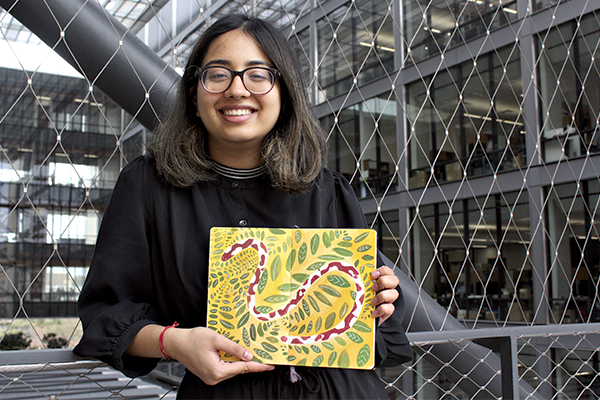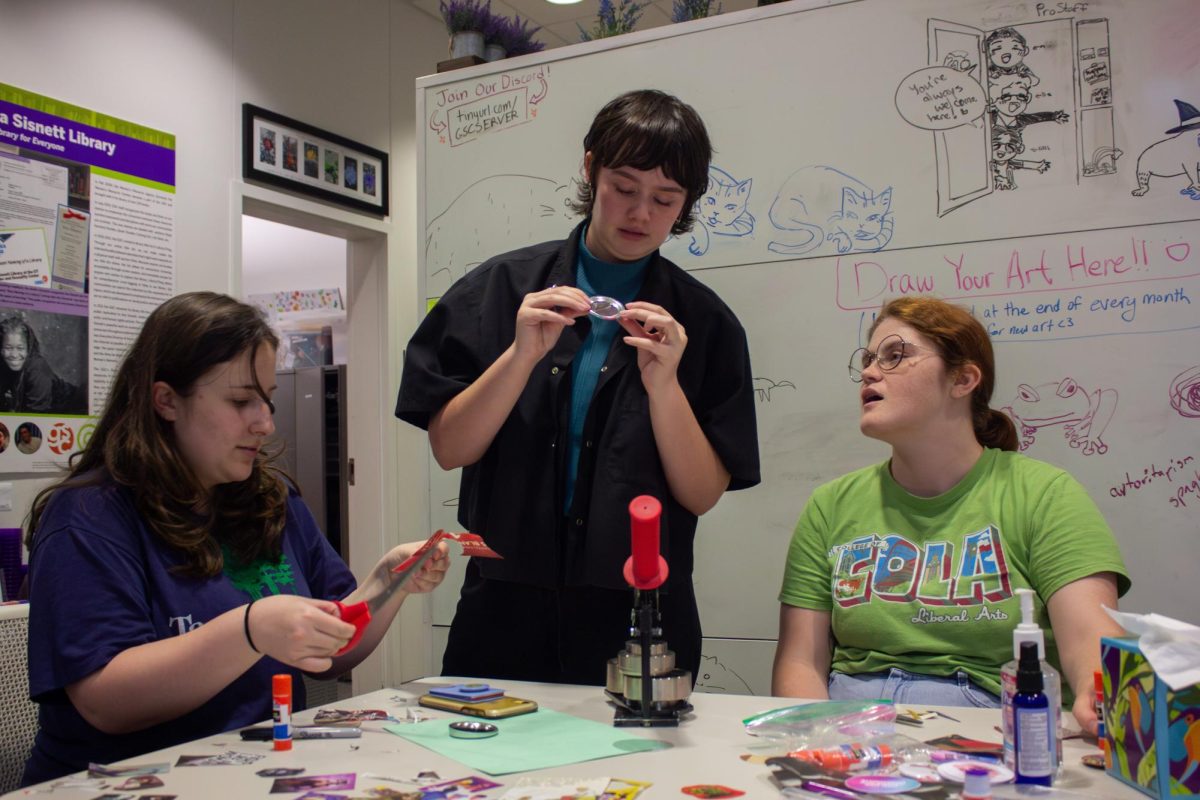For Ria Upreti, art is just something that happens.
“I can’t keep my hands still,” Upreti, a chemical engineering and linguistics sophomore, said. “I have to have something in front of me. I have to draw. I have to get these ideas in my head on paper.”
When Upreti first came to UT, she looked for organizations on campus that offered her space to be an artist while still being able to focus on her science classes. She said it was difficult at first because she did not know any art majors but that she eventually joined Apricity, an on-campus literary and arts magazine, which made her feel more involved in art at UT.
Upreti has been doing art since she was 8 years old and has recently been interested in pursuing a career in product design. But first she wants her art portfolio critiqued by an art professor so she knows what she needs to fix or improve.
“To be able to go into product design, you need to have a portfolio,” Upreti said. “I can make work for myself or ask friends for critiques all I want, but I need to present it to (a professional) and get a job or something out of it.”
Margo Sawyer, the assistant chair for studio art in the College of Fine Arts, said critiques are done in all art classes, including ones for non-art majors. However, Sawyer said professors do not do critiques for students not enrolled in classes or in the major.
“That would be a lot of work,” Sawyer said. “When somebody comes to one of these art classes, their work will be critiqued.”
Chemical engineering junior Adam Halimi has been painting for about a year and wants to start pursuing it more seriously. Like Upreti, he wants to bring professional attention to his work so he knows where he needs improvement.
As an engineering major, Halimi said he feels like he has been restricted to the expectations of his major and is unable to obtain information on the art scene at UT.
“I don’t think anything outside of going into industry or consulting is considered as a real possibility for engineering majors,” Halimi said. “I’d like for what’s available to be made known because I am not aware of any (resources) for non-(art) majors.”
Studio art sophomore Riya Patel said the College of Fine Arts does not communicate well with its students, and people do not usually know when the print shop or sculpture labs are open. However, she said a lack of funding and resources makes it difficult to open the college up to non-art majors.
“I (still) think everyone should have a voice if they’re an artist, whether they’re engineering or pre-med,” Patel said. “Everyone should be welcomed.”
Sawyer recommends that non-majors interested in being more involved should volunteer at the Blanton Museum of Art or attend free lectures at the College of Fine Arts, which are open to the public. She said until there is more funding, resources won’t be extended to students not enrolled in art classes or in the major.
“There’s only a certain amount of resources, space and money,” Sawyer said. “We don’t have one big room that somebody can come in and paint at anytime, that would be nice, but it’s our students who are committed to being visual artists that are our main (priority).”





















